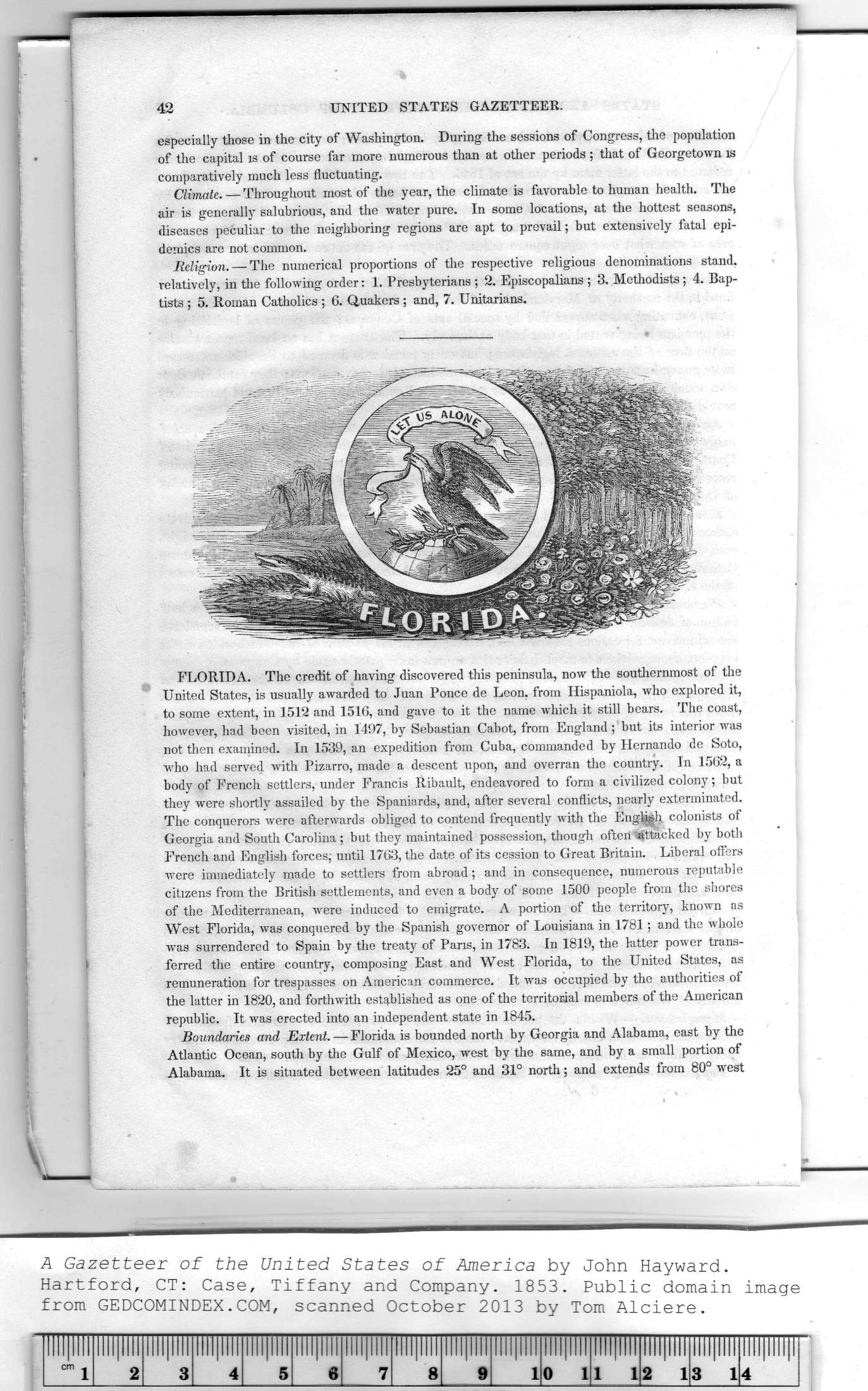|
|
Note: Ctrl and + increases the font size of the text below, Ctrl and - decreases it, and Ctrl and 0 resets it to default size.
42 UNITED STATES GAZETTEER.
especially those in the city of Washington. During the sessions of Congress, the population
of the capital is of course far more numerous than at other periods ; that of Georgetown is
comparatively much less fluctuating.
Climate. — Throughout most of the year, the climate is favorable to human health. The
air is generally salubrious, and the water pure. In some locations, at the hottest seasons,
diseases peculiar to the neighboring regions are apt to prevail; but extensively fatal epi-
demics are not common.
Religion. — The numerical proportions of the respective religious denominations stand,
relatively, in the following order: 1. Presbyterians ; 2. Episcopalians ; 3. Methodists; 4. Bap-
tists ; 5. Roman Catholics ; 6. Quakers ; and, 7. Unitarians.
FLORIDA. The credit of having discovered this peninsula, now the southernmost of the
United States, is usually awarded to Juan Ponce de Leon, from Hispaniola, who explored it,
to some extent, in 1512 and 1516, and gave to it the name wrhich it still bears. The coast,
however, had been visited, in 1497, by Sebastian Cabot, from England ; but its interior was
not then examined. In 1539, an expedition from Cuba, commanded by Hernando de Soto,
who had served with Pizarro, made a descent upon, and overran the country. In 1562, a
body of French settlers, under Francis Ribault, endeavored to form a civilized colony; but
they were shortly assailed by the Spaniards, and, after several conflicts, nearly exterminated.
The conquerors were afterwards obliged to contend frequently with the English colonists of
Georgia and South Carolina ; but they maintained possession, though often attacked by both
French and English forces, until 1763, the date of its cession to Great Britain. Liberal offers
were immediately made to settlers from abroad; and in consequence, numerous reputable
citizens from the British settlements, and even a body of some 1500 people from the shores
of the Mediterranean, were induced to emigrate. A portion of the territory, known as
West Florida, was conquered by the Spanish governor of Louisiana in 1781; and the whole
was surrendered to Spain by the treaty of Pans, in 1783. In 1819, the latter power trans-
ferred the entire country, composing East and West Florida, to the United States, as
remuneration for trespasses on American commerce. It was occupied by the authorities of
the latter in 1820, and forthwith established as one of the territorial members of the American
republic. It was erected into an independent state in 1845.
Boundaries and Extent. — Florida is bounded north by Georgia and Alabama, east by the
Atlantic Ocean, south by the Gulf of Mexico, west by the same, and by a small portion of
Alabama. It is situated between latitudes 25° and 31° north; and extends from 80° west
A Gazetteer of the United States of America by John Hayward.
Hartford, CT: Case, Tiffany and Company. 1853. Public domain
|
